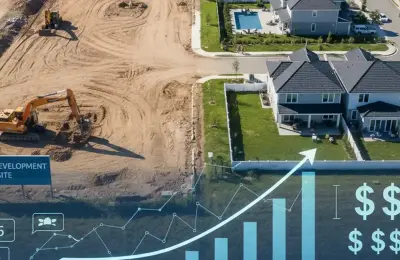
Dubai vs. Abu Dhabi: A 2025 Price Comparison for Premium Real Estate – Where to Invest?

The United Arab Emirates (UAE) remains a global powerhouse for luxury real estate investment. At the forefront of this market are two dominant Emirates: Dubai—a hub of dynamic growth and modern luxury—and Abu Dhabi—a center of culture, stability, and governmental prestige.
For investors and buyers looking into the premium real estate segment, a detailed comparison of prices and growth potential is crucial. Which Emirate offers the superior investment opportunity in 2025? We delve into the current pricing trends and market specifics.
Premium Real Estate Price Dynamics: Dubai Leads the Value Race
As of 2025, Dubai firmly holds its position as the most expensive and rapidly evolving real estate market in the UAE, particularly within the luxury segment.
| City | Segment | Average Price per sq. ft (AED) | Approx. Average Price per sq. meter (USD) | Annual Price Growth (2025 Forecast) |
|---|---|---|---|---|
| Dubai | Premium (Luxury) | 2,750 – 3,500+ | $7,487 – $9,530+ | +10% – +18% |
| Abu Dhabi | Premium (Luxury) | 2,100 – 2,800 | $5,717 – $7,624 | +5% – +8% |
Key Fact: The average price for prime luxury properties in Dubai is typically 20–35% higher than in comparable premium districts in Abu Dhabi. Despite this premium, Dubai remains considerably more affordable than global leaders like Monaco or New York, while offering unparalleled quality of life and infrastructure.
Where are the Most Exclusive Properties Located?
Dubai (Ultra-Premium): The highest prices are concentrated in iconic locations: Palm Jumeirah (especially beachfront villas), Downtown Dubai (Burj Khalifa views), Jumeirah Bay, and Dubai Hills Estate (high-end villas). Entry-level prices for a 1-bedroom apartment in a prime tower can easily exceed €1 Million, with luxury villas starting well above €2 Million.
Abu Dhabi (Premium): Prestigious areas include Saadiyat Island (the cultural district featuring the Louvre Abu Dhabi and future Guggenheim), Yas Island (entertainment and leisure hubs), and Al Reem Island (high-rise apartments). These properties offer a similar standard of luxury but often at a more accessible price point.
Investment Appeal: Liquidity vs. Stability
The choice between Dubai and Abu Dhabi should align with your specific investment strategy:
Dubai: High Liquidity and Rapid Capital Appreciation
Dubai excels due to its higher liquidity and strong potential for rapid capital appreciation.
Capital Growth: Driven by immense international demand, a continuous influx of High Net Worth Individuals (HNWIs), and a huge volume of off-plan transactions, Dubai exhibits more aggressive price growth (up to 18% or more in key segments).
Rental Yields (Gross): Average yields typically range from 6-8%, occasionally reaching 9% in specific high-demand areas. This is attractive to investors focused on short-term income.
Risk Profile: Higher market competition and the potential for moderate price corrections in some segments due to the large pipeline of new developments.
Abu Dhabi: Stability and Consistent Income
Abu Dhabi is characterized as a market offering stability and reliable long-term income.
Price Stability: Price growth is more measured (5–8%), resulting in a less volatile and more predictable market.
Rental Yields (Gross): While average gross yields might be slightly lower (5–6.5%), Abu Dhabi often provides a higher net yield due to lower vacancy rates and a stable, long-term tenant base (often composed of government employees and local executives).
Advantage: The market is driven by strategic, government-backed cultural and economic projects, particularly on Saadiyat Island, ensuring stable long-term demand.
📝 Investor’s Summary Comparison
| Criterion | Dubai (Dubai) | Abu Dhabi (Abu Dhabi) | Investment Conclusion |
|---|---|---|---|
| Average Price (Premium) | Higher | More Moderate (20-35% less) | Abu Dhabi offers a better entry price point. |
| Capital Growth | Aggressive (+10% and above) | Moderate and Steady (+5% – +8%) | Dubai for fast capital appreciation. |
| Liquidity | Very High | High, but lower volume | Dubai for faster transactions and exits. |
| Rental Yields (Gross) | Higher (6-8%) | Stable (5-6.5%) | Dubai for higher gross income. |
| Market Focus | Global Luxury, Tourism, Technology | Culture, Government, Family, Long-Term Business | Depends on the investor’s profile. |
Final Verdict
For the investor seeking maximum capital appreciation and market dynamism, Dubai remains the prime choice in the premium segment. Prestigious addresses like Palm Jumeirah offer not just luxury living but historically robust appreciation potential.
For those who prioritize stability, predictable long-term growth, and seek a more favorable entry price for comparable quality, Abu Dhabi—with its cultural destinations and exclusive residential islands—offers a more balanced and secure long-term investment.
News insight
 Nov 18, 2025
Nov 18, 2025
Property Developer Earnings in the US Market: A Comprehensive Overview
Explore how US property developers earn money. Learn about profit margins (Residential vs. Commercia...
 Nov 18, 2025
Nov 18, 2025
What Is a Build-to-Rent (BTR) Development?
Discover what a Build-to-Rent (BTR) development is. Learn about this growing real estate model, its...
 Nov 17, 2025
Nov 17, 2025
Build-to-Rent: Transforming America's Housing Landscape
Explore how the Build-to-Rent (BTR) model is transforming the US housing market. Learn why instituti...
